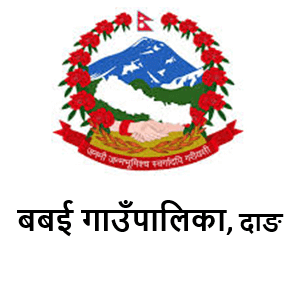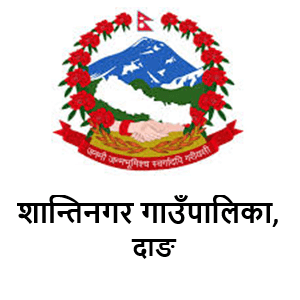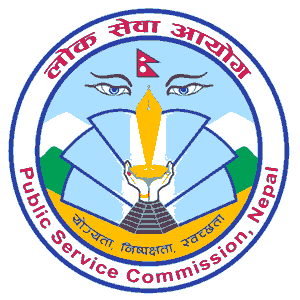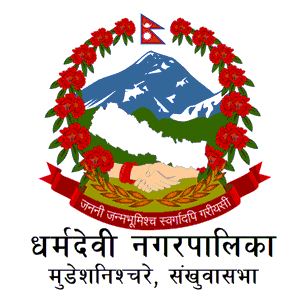Overview
Rajpur Rural Municipality (Rajpur Gaupalika) was formed by merging the former Bela and Rajpur VDCs, Located in the southern part of the Deukhuri area, Dang, Lumbini Pradesh. As the largest rural municipality in Dang District, Rajpur covers an area of 577.33 square kilometers. It is bordered to the east by Gadhwa Rural Municipality and Lamahi Municipality, to the west by Banke District, to the north by Lamahi Municipality, and to the south by the Mahabharat range. On the world map, it is situated between 82°6' to 82°30' eastern longitude and 27°39' to 28°03' northern latitude, with an altitude ranging from 187 meters to 852 meters above sea level.
Dang District is one of the most significant districts in Nepal, both economically and culturally. Geographically, Dang District features the flat inner Terai plains, two valleys surrounded by small and medium-sized hills, and the Mahabharat and Chure ranges. Among these, the northern valley is known as Dang, while the southern valley is referred to as Deukhuri.
Rajpur Rural Municipality holds significant potential among the newly formed rural municipalities in Dang District. The political parties and motivated villagers here serve as strong and sustainable resources for the development of the municipality.
Located in the southern part of Deukhuri, Dang District, Rajpur Rural Municipality was formed by merging the former Bela and Rajpur VDCs. It is the largest rural municipality in Dang District, covering an area of 577.33 square kilometers.
According to the 2078 census, the population of this rural municipality is 28,346, with 14,288 females (50.4%) and 14,058 males (49.6%).
Agriculture plays a significant role in the average family income, and another major source of income for the local residents is foreign employment. The residents here are gradually adapting to a modern lifestyle, seeking alternatives to traditional farming practices. There is a growing trend of local manpower migrating abroad for labor and education. While there are some educational institutions in the municipality providing basic to higher secondary education, a new education policy is needed to foster higher education development. Students from neighboring municipalities also attend educational institutions in this municipality. However, the expected development of the area has been hindered by challenges in the financial management necessary for implementing planned development programs. The municipality is home to various communities and ethnic groups who celebrate different festivals such as Dashain, Tihar, Maghi, Holi, Gaura, Krishna Janmashtami, Bakr-Eid, Aitbari, Chhath, Buddha Jayanti, and Christmas.
Topography
In terms of natural resources, this rural municipality is rich in fertile soil suitable for agriculture. The soil types found here include sandy loam, loamy, and sandy clay loam. The main crops grown in the municipality include rice, wheat, maize, barley, mustard, potatoes, sugarcane, lentils, peas, chickpeas, and soybeans.
Land Classification
The land in Rajpur Rural Municipality has been classified based on its topography, land-use potential, and landslide tendencies. The classification of land is based on the likelihood and intensity of land degradation. In other words, the tendency for landslides or land degradation varies according to the land's structure. Measures to strengthen land stability are presented based on the physical characteristics of the land.
Climate
Rajpur Rural Municipality is a geographically diverse area, which also reflects in its weather and climate. The climate here can be divided into three types: tropical, subtropical, and temperate. Compared to other Terai and eastern districts, the humidity here is relatively low, making the air feel dry. Although there are numerous rivers, ponds, and lakes in the municipality, most of them dry up during the summer months, especially before the monsoon.
The average temperature in Dang District ranges from a maximum of 20.5°C to 39.9°C and a minimum of 21.8°C to 2.5°C. The municipality experiences moderate heat in the summer and mild cold in the winter. The average annual rainfall in the district is 1,706 millimeters, with the highest rainfall occurring in the months of Asar, Shrawan, and Bhadra.
However, historical data shows that the minimum temperature can drop to 0.0°C, and the maximum temperature can reach 40.5°C. The average annual rainfall has also varied significantly, ranging from 1,266.3 mm to 1,779.5 mm over the past 10 years. The monsoon rains here are primarily driven by winds from the Bay of Bengal, which remain active from Asar to Bhadra. During the winter, scattered rainfall occurs due to western monsoon winds.
Possibilities and Opportunities in Rajpur Rural Municipality:
Rajpur Rural Municipality has various potential opportunities for economic development, including transportation services, information technology, educational training centers, financial services, foreign employment, fish farming in rivers and streams, and modern agricultural practices.
Overall, a significant number of households in Rajpur Rural Municipality are engaged in agriculture. There are ample opportunities to increase the production of cash crops, vegetables, fruits, sugarcane, mustard, spices, herbs, and animal products on the arable land within the municipality. However, the lack of modern agricultural technology, fertilizers, and tools, along with their high costs, has led to a reduced use of these resources, resulting in insufficient growth in agricultural production. There are numerous opportunities to enhance economic conditions by raising awareness, improving skills and commercialization, transferring technology, and simplifying the availability of necessary technology, fertilizers, loans, and seeds to boost agricultural and animal production.
The fertile land in the municipality is gradually diminishing due to the development of settlements and other constructions. Additionally, the soil's fertility is gradually declining, leading to a reduction in production and productivity. By organizing unplanned settlement development, repairing traditional irrigation channels, increasing soil fertility, and reducing environmental pollution, it is possible to create a livable and vibrant place for future generations.
There is significant potential for dairy and livestock production in the rural areas of the municipality. Expanding this business, along with making transportation services easily accessible, could lead to the establishment of milk chilling centers, cold stores, and meat processing industries in various locations, thereby creating employment opportunities and increasing income across the municipality.
If natural resources in the municipality are managed and utilized using environmentally friendly technology, it could create local employment opportunities in several rural areas and bring sustainability to the mobilization of local resources.
Several wards in the municipality have natural rivers and streams, and constructing additional ponds in some areas for fish farming could easily increase employment opportunities. This could potentially replace fish imports from India, allowing the domestic market to be supplied with locally produced fish.
If community forest user groups in the municipality are organized and institutionalized, and non-timber forest products such as herbal cultivation and honey production are promoted and marketed, it could further contribute to the economic prosperity of the area.
The municipality is home to several historic, religious, cultural, and archaeological sites, including many small and large temples. If these sites are properly managed, they could significantly increase the number of domestic and foreign tourists, thereby creating additional economic opportunities.
With the rise in unemployment in the municipality and across Nepal, along with the limited job opportunities in government and non-government sectors, there has been an increasing attraction towards foreign employment. If vocational training is provided to the interested youths in the municipality and they are integrated into foreign employment, this could greatly contribute to the economic development of the municipality.
Potential Development Strategies for Rajpur Rural Municipality:
-
Irrigation Development: By using modern irrigation systems and canals to channel water from rivers and streams within the municipality, significant growth in agricultural production can be achieved.
-
Road Infrastructure Improvement: Upgrading the local dirt roads to blacktopped roads would not only provide substantial benefits to the residents but also enhance the overall beauty of the municipality.
-
Commercial Agriculture: Given the lack of market issues for vegetable, livestock, and other agricultural products, focusing on commercial agricultural production seems appropriate and feasible.
-
Industrial Expansion: Expanding industries within the municipality could significantly increase local employment opportunities.
-
Tourism Development: The presence of various historic, religious, and cultural sites in the area offers considerable potential for tourism development.
-
Partnerships for Development: With the presence of government, non-government, and private organizations in the area, there is potential for partnerships in the development of the municipality.
-
Industry, Trade, and Commerce: As the number of consumers in the municipality continues to grow, there is potential for the development of industry, trade, and commerce.
Problems, Challenges, Opportunities, and Potentials of Rajpur Rural Municipality:
The challenges and problems hindering the social and physical development of Rajpur Rural Municipality can be summarized as follows:
Challenges and Problems:
-
Lack of Employment-Generating Industries: There is an absence of essential industries and factories within the municipality that could generate employment opportunities.
-
Inadequate Management of Drinking Water and Public Toilets: Proper management of drinking water and public toilets has not yet been achieved in the municipality.
-
Underdeveloped Road Infrastructure: Many roads within the municipality are unpaved and of low quality.
-
Underdeveloped Commercial Agriculture: Despite having arable land, the development of commercial farming has not been realized.
-
Limited Income Sources: The lack of sufficient income sources poses challenges to the municipality's standard development processes.
-
Unmanaged Urbanization: The municipality has been unable to manage the growing urbanization effectively.
-
Lack of Local Representatives: There is a shortage of local representatives, which affects governance and development.
-
Dependence on Rainwater for Irrigation: The agricultural sector is heavily dependent on rainwater for irrigation.
-
Traditional Farming Practices: Agriculture in the municipality still follows traditional practices, limiting productivity.
-
Annual Flooding and Soil Erosion: The municipality faces recurring issues of flooding and soil erosion, leading to the fragmentation and underutilization of arable land.
Opportunities and Potentials:
-
Abundant Natural Resources: The municipality has a sufficient availability of natural resources such as forests, fertile agricultural land, rivers, and streams, as well as a diverse geographic and biological environment.
-
Increasing Educated Human Resources: There is a growing number of educated human resources within the municipality.
-
Youth Dominance: The municipality has a significant youth population, which can be leveraged for development.
-
Connection to National Highway System: The municipality is connected to the national highway system, facilitating transportation and trade.
-
Establishment of Educational Centers: There has been progress in the establishment and management of educational centers within the municipality.
-
Open Border with India: The open border with India presents both opportunities and challenges for the municipality.
-
Public Participation Deficit: There is a lack of sufficient public participation in the development activities of the municipality.
-
Positive Development in Sports: The municipality has seen good development in sports, which could be further enhanced.
Inter-Municipality Relations of Rajpur Rural Municipality:
Municipalities are interrelated in various ways, and the nature and distance of these relationships can vary between them. For human development, people often need to travel between different areas, and in the process of utilizing available resources, one municipality may depend on another. The key areas of interdependence include transportation, migration, agricultural and livestock products, forest produce, tourism, employment, the use and management of natural resources, education, and health services.
In Rajpur Rural Municipality, people from other municipalities and villages come to access various facilities available here. Agricultural and forest products from the hilly areas are often brought down to the Terai region. As the Terai is more developed in terms of facilities compared to the hilly districts, there is a significant trend of migration from the hills to the Terai. Being geographically located in the same region, air and road transportation services facilitate movement between municipalities with available services. Seasonal employment also sees people moving from the hills to the Terai. These various factors have further strengthened inter-municipality relations.
Additionally, Rajpur Rural Municipality maintains good relations with neighboring municipalities, municipalities, and district development committees. This collaboration has facilitated the coordination of developmental activities in the area. Furthermore, the municipality has established good relationships with various national and international non-governmental organizations, enhancing the scope of development and cooperation.
Religious, Natural, and Touristic Sites:
Nepal, known for its unparalleled natural beauty, rich biodiversity, multi-ethnic, multi-lingual, and multi-religious social diversity, as well as historical and cultural heritage, is recognized as a prominent tourist destination on the world tourism map. With the rapid development of science, technology, and communication systems transforming the world into a global village, Nepal must present these national treasures to the world, enhancing its capability to attract the global tourism market and reap significant benefits. Since the tourism industry is a key pillar for national economic development, diversifying and expanding this sector is essential to increase employment opportunities and improve the living standards of citizens. To achieve this, it is crucial to preserve and promote Nepal's diverse heritage while simultaneously developing all types of infrastructure related to tourism services, including international air transport, and increasing the quantity and quality of tourism service industries.
Religious Sites in Rajpur Rural Municipality:
Rajpur Rural Municipality is home to several temples that are well-known not only in Dang District but also in neighboring districts. One notable religious site is the temple of Samayathan, revered by Hindu devotees. It is believed that gods reside under the open sky at this sacred site. During Shivaratri, a three-day fair is held here. Additionally, there are two other Shiva temples in the area. Access to these religious sites requires road travel. Below is a detailed list of the religious sites within Rajpur Rural Municipality.
Picnic Spot:
Rajpur Rural Municipality also features the popular picnic spot of Katkuwa Pond, which spans 5 bighas of land. This location is not only known for picnicking but also for observing various wildlife.
Major Festivals:
The municipality is home to people of various castes, religions, and ethnic backgrounds. The majority of the population practices Hinduism, with both hill and Madhesi communities present, along with Muslim and Christian minorities. Each ethnic and religious group has its own unique traditions and cultures. Major festivals celebrated in the area include Dashain, Tihar, Ram Navami, Maha Shivaratri, Haritalika, Saraswati Puja, Krishna Janmashtami, Vivah Panchami, Chhath (Holi), Chaite Dashain, Saune-Maghe Sankranti, Maghi, Goth Dhup, Matatirtha Aunsi, Akshaya Tritiya, Harishayani-Haribodhini Ekadashi, Nag Panchami, Raksha Bandhan (Janai Purnima), Kushe Aunsi, Balachaturdashi, Kojagrat Purnima, Gothale, Sri Swasthani Purnima, New Year, Sohra Shraddha, Jitiya, Siruwa (especially Tharu-Khavas), Kul-Thani Puja, Gramthan Puja, Karva Chauth, Karkat Sankranti, Bhurki Poojan, Sankat Puja, Buddha Jayanti, various Lhosar festivals, Barawafat, Shab-e-Barat, Eid, Bakr-Eid, Muharram, Gyarahi Sharif, Eid al-Fitr, Christmas Day, New Year, Valentine’s Day, Gaura, Holi, Aitbari, Devijat, Charai (Rana Tharu ethnic group's festival), Dhuria Puja, Bhootuwa Puja, Ranputla (celebrated by Brahmins and Chhetris), Anant, Puse 15, Olke, Asare 15, Ganga Dussehra, Bisu Tihare, and more.
Culture, Art, Language, and Literature:
Rajpur Rural Municipality is rich in culture, art, language, and literature. The municipality is home to families from various ethnic groups, religions, and languages. The prevalent art forms include Bhui Kala, Vedi, Nag, Ashtadal, Jyoti Kala, Totemistic Art, Gaura (sculpture art), Gaj (effigies and symbols of deities), Vijay Sal glasses, woodcraft, oil chadi (traditional lamps), Pallos, Koshi, Chhapro, Dakiya, Doko, Namlo, and various other forms of art and culture. However, due to the lack of study and preservation of these arts and cultures, some traditions are at risk of extinction.
The indigenous Tharu community residing in the municipality has significantly contributed to the cultural tourism of the area. The following is a detailed description of Tharu culture:
Tharu Culture:
Among the many facets of tourism in Rajpur, indigenous culture plays a major role. From a sociological perspective, culture encompasses a broad and inclusive concept. It includes lifestyle, behavior, thought processes, values, traditions, beliefs, art, language, customs, and religion. The Tharu community has a unique indigenous lifestyle, knowledge, and skills. However, modern influences and interactions with other cultural groups have somewhat diminished their cultural uniqueness.
The Tharu community, with its distinct cultural practices and indigenous knowledge, comprises 21.96% of the total population. Cultural tourism has become an area of interest for both domestic and international tourists. In efforts to integrate rural tourism in Rajpur, there is a need to develop Tharu restaurants and eateries offering their distinctive cuisine. Additionally, showcasing their traditional attire, dances, musical instruments, songs, and games could attract both domestic and international tourists. Similar to the cultural tourism development seen in Kathmandu’s Newar culture, Manang and Mustang’s Gurung and Thakali cultures, Solu’s Sherpa culture, Lamjung’s Ghale Gaun Gurung culture, and Syangja’s Sirubari culture, Rajpur also has the potential to become a cultural tourism destination for Tharu culture.
Rajpur Rural Municipality has evolved as a melting pot of cultures, arts, and traditions from communities coming together from different backgrounds and environments. The indigenous Tharu community's unique culture, customs, attire, language, and lifestyle have become a cultural heritage of Rajpur. Tharu settlements are typically densely populated, with close-knit communities. Their homes are easily identifiable by the cluster of thatched houses. The Tharu community still upholds the traditions of the headman, Badghar, or Chaudhary system. The family sizes in the Tharu community tend to be large, although modern influences have led to an increase in nuclear families. Their houses are traditionally built long, aligned north-south, to allow sunlight from the east and to worship deities in the northeastern room. Tharu homes often feature artistic mud plaster designs on their walls, depicting peacocks, flowers, horses, elephants, and other animals, indicating their longstanding expertise in the arts.
The Tharu community has a rich tradition of crafts, including bamboo baskets (Bhaunka) and wooden chests (Dakiya) for storing clothes and household items. Their homes often feature intricately carved wooden windows and doors, showcasing their proficiency in woodcraft. In the Tharu language, there are seasonal songs and dances such as Sajana, Maina, Dhamar, Badkima (sung during Janmashtami and Dashain), and Sakhiya, which are excellent examples of Tharu music.
Tharu men traditionally wear dhoti-kameez, bhagwa, chadri, jamaa kakasuti, and topi, while women wear angiya, lehenga gatiya, and fariya. However, with the influx of other communities into the Terai, the practice of wearing traditional Tharu attire has gradually declined, with traditional clothing now mostly worn during festivals or formal occasions.
Tharu women have a tradition of wearing jewelry from head to toe, including tikuli and magiya on the forehead, nathiya, nathuni, bulaki, and fengfi on the nose, and a wide variety of earrings such as veer, jhilimiliya, lurki, kanbajhwa, airam, turki, marwari, and jhumka-jhumki. Necklaces include sikri, mala, gatiya, kansheri, tonka, sutya, dhurva, and more. The jewelry and attire vary among different Tharu subgroups such as Dangha, Rojhiya, Khatriya, and Rana Tharu.
The Tharu community is known for its exceptional hospitality. When guests arrive, they are honored with a bed or mat spread on the floor and are offered water. Meals for guests often include fish, meat, or sidra (dried fish), or eggs as a sign of respect. Guests are also escorted to the village boundary, river, or stream as a customary farewell.







